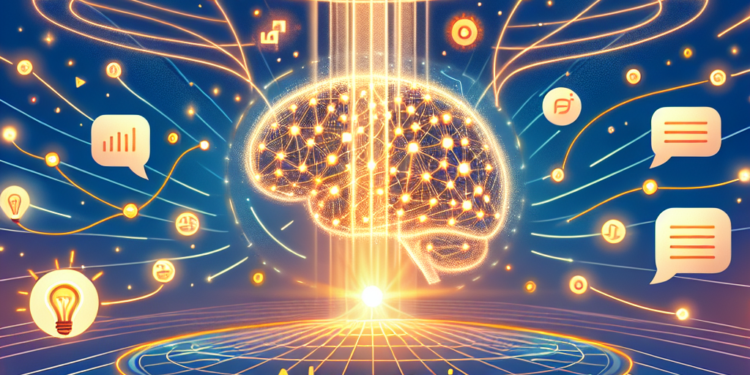Advances in Language Translation Powered by AI
Language translation has long been a crucial tool in bridging communication gaps between individuals who speak different languages. From the early days of manual translation to the development of computer-assisted translation tools, the field of language translation has undergone significant advancements over the years. However, recent developments in artificial intelligence (AI) have revolutionized the way in which translations are performed, making the process faster, more accurate, and more accessible than ever before.
AI-powered language translation systems leverage machine learning algorithms to process and understand natural language and generate accurate translations. These systems are capable of learning from large amounts of text data, enabling them to continuously improve their translation accuracy over time. By analyzing the context, grammar, and syntax of a sentence, AI-powered translation systems can produce translations that are not only more accurate but also more natural-sounding.
One of the most notable advancements in AI-powered language translation is the development of neural machine translation (NMT) models. NMT models have revolutionized the field of translation by using deep neural networks to translate text from one language to another. Unlike traditional rule-based translation systems, which rely on manual rules and dictionaries, NMT models learn to translate by processing large amounts of text data and identifying patterns in language usage.
NMT models have been shown to outperform traditional statistical machine translation systems in terms of accuracy and fluency. These models are capable of handling complex sentence structures, idiomatic expressions, and cultural nuances, making them ideal for translating a wide range of text types, from formal documents to informal chat conversations. NMT models have become increasingly popular in recent years, with major technology companies such as Google, Microsoft, and Amazon incorporating them into their translation services.
Another key advancement in AI-powered language translation is the integration of natural language processing (NLP) techniques. NLP techniques enable translation systems to analyze and understand the nuances of human language, allowing them to produce translations that are not only accurate but also contextually relevant. By incorporating NLP techniques such as sentiment analysis, named entity recognition, and topic modeling, AI-powered translation systems can produce translations that are tailored to the specific needs of the user.
One of the main challenges in language translation is the preservation of meaning and intent across languages. AI-powered translation systems address this challenge by using advanced algorithms to analyze and interpret the meaning of a sentence, rather than just translating it word-for-word. By understanding the context and intention behind a sentence, AI-powered translation systems are able to produce translations that accurately convey the original message, even if certain words or phrases need to be adjusted for clarity or cultural relevance.
AI-powered translation systems also offer significant benefits in terms of speed and scalability. Traditional human translation services can be slow and expensive, especially when dealing with large volumes of text. AI-powered translation systems, on the other hand, are able to process text much more quickly and at a fraction of the cost. This makes them ideal for businesses and individuals who need to translate large amounts of text on a regular basis, such as e-commerce companies, multinational corporations, and international organizations.
Furthermore, AI-powered translation systems are constantly evolving and improving. By continuously analyzing user feedback and implementing new training data, these systems are able to learn from their mistakes and improve their translation accuracy over time. This iterative learning process enables AI-powered translation systems to adapt to new languages, dialects, and styles of writing, making them highly versatile and adaptable to a wide range of translation tasks.
In addition to written text, AI-powered translation systems are also being developed to translate spoken language in real-time. This technology, known as speech-to-speech translation, allows users to have conversations in different languages without the need for an interpreter. Speech-to-speech translation systems use voice recognition technology to transcribe spoken language into text, which is then translated into the desired language and spoken aloud using a synthetic voice. This technology has the potential to revolutionize communication between individuals who do not speak the same language, opening up new opportunities for collaboration and exchange.
Despite the many advantages of AI-powered language translation, there are still some challenges and limitations that need to be addressed. One of the main challenges is the lack of sufficient training data for less commonly spoken languages. AI-powered translation systems rely on large amounts of text data to learn and improve their translation accuracy, but for languages with limited resources and speakers, this can be a significant obstacle. Efforts are underway to overcome this challenge by collecting and curating more training data for underrepresented languages, but progress has been slow.
Another challenge is the potential for bias and inaccuracies in AI-powered translation systems. Like any technology, AI-powered translation systems are susceptible to errors and biases, especially when translating sensitive or culturally nuanced content. Issues such as gender bias, racial bias, and offensive language can arise if the training data used to train the system is not adequately diverse or representative. To address this challenge, researchers and developers are working to develop more inclusive and ethical AI-powered translation systems that prioritize accuracy, fairness, and sensitivity.
In conclusion, advances in AI-powered language translation have revolutionized the field of translation by making it faster, more accurate, and more accessible than ever before. Neural machine translation models, natural language processing techniques, and speech-to-speech translation technology have significantly improved the quality and reliability of translations, making them suitable for a wide range of applications. While there are still challenges and limitations to overcome, the future of AI-powered language translation looks promising, with continued advancements in technology and research paving the way for more seamless and effective communication across languages.













